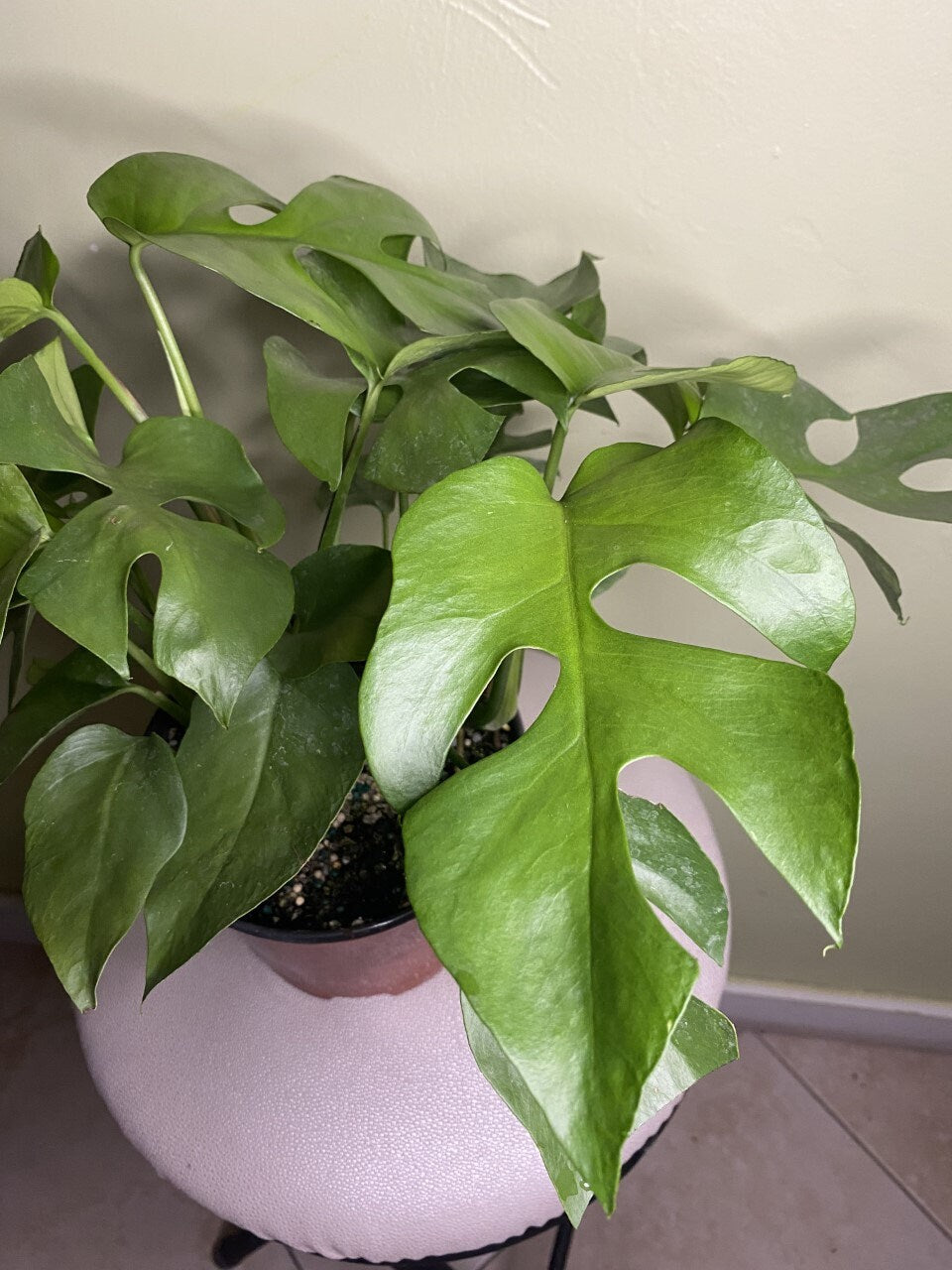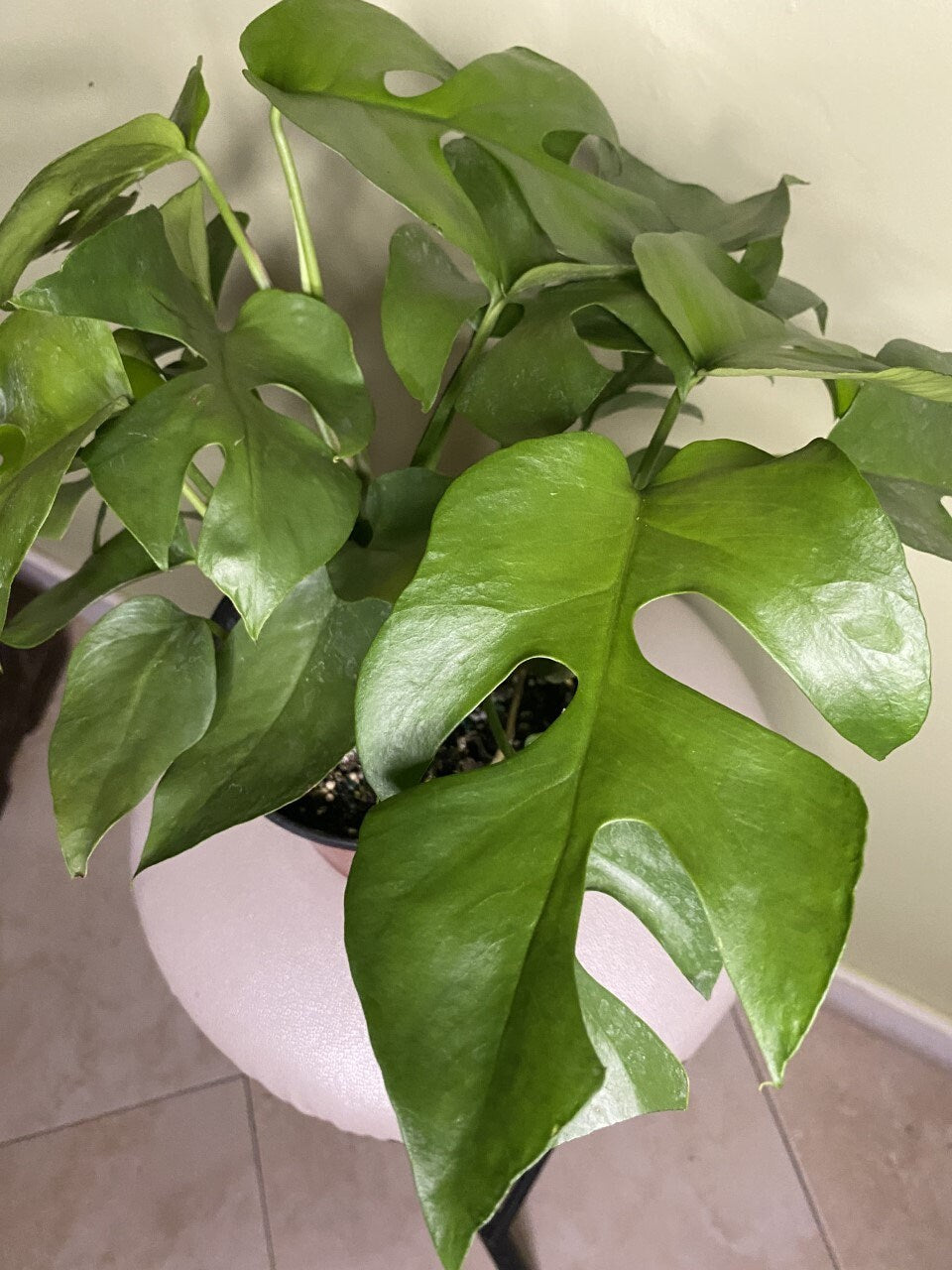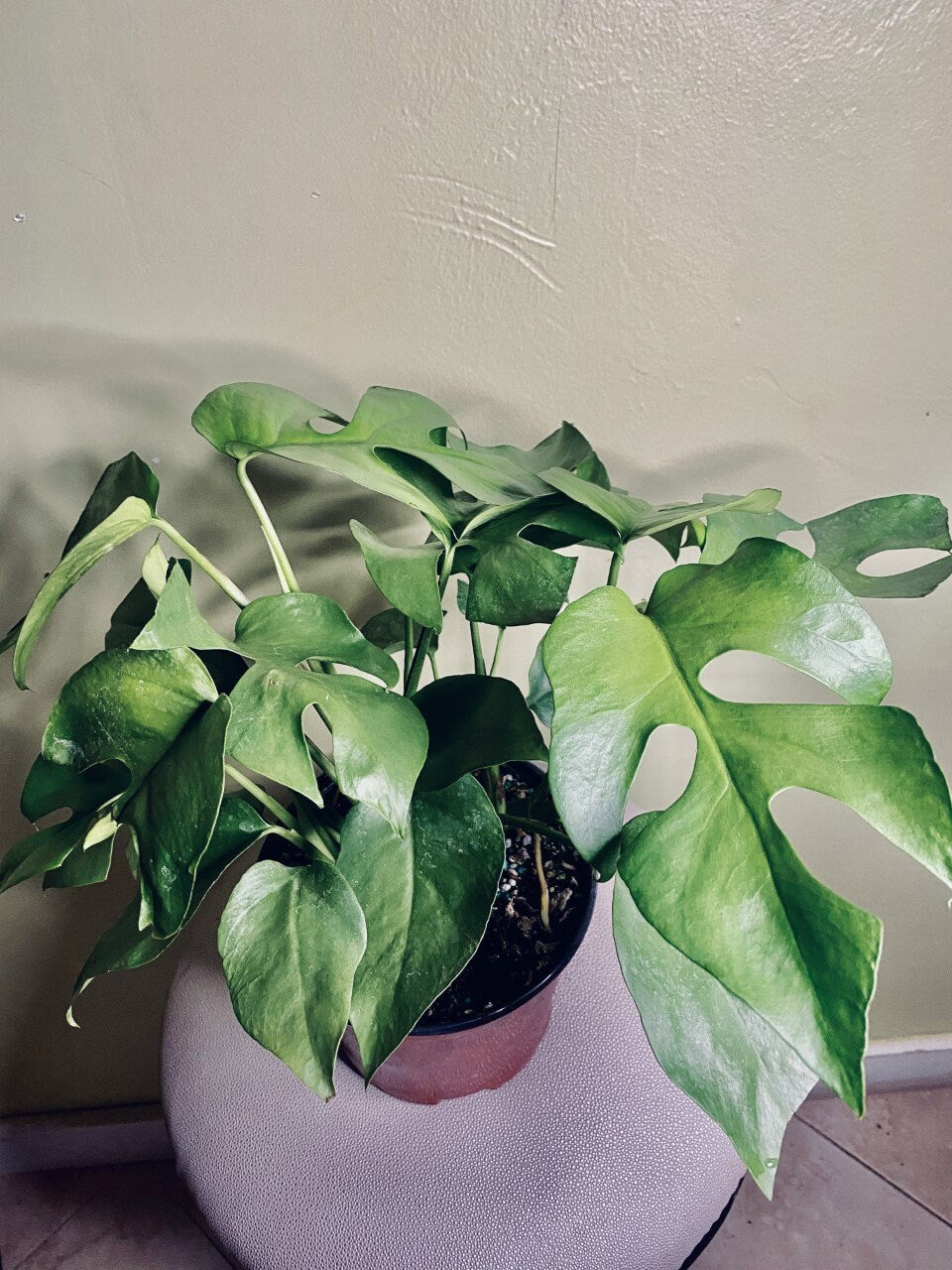Rhaphidophora tetrasperma AKA Monstera Minima AKA Ginny Monstera, Live Plant, 6" Pot, Ultra Rare Indoor Air Purifier
Rhaphidophora tetrasperma AKA Monstera Minima AKA Ginny Monstera, Live Plant, 6" Pot, Ultra Rare Indoor Air Purifier
Couldn't load pickup availability
Note : You will receive Monstera Tetrasperma in 6" Pot similar to the pictures
Rhaphidophora tetrasperm is a fast-growing, tropical vining plant known for its distinctive, split-leaf pattern, which resembles a miniature monstera. Often referred to as "Mini Monstera" or "Philodendron Ginny," though it’s not a true monstera or philodendron, Rhaphidophora tetrasperm boasts lush, glossy leaves with deep fenestrations and a unique, delicate appearance. It is native to Southeast Asia and thrives in warm, humid conditions with bright, indirect light. This plant is relatively easy to care for, growing quickly when provided with proper light, consistent moisture, and support for its climbing or trailing habit. With its compact size and striking foliage, Rhaphidophora tetrasperm has become a popular choice for indoor plant enthusiasts looking for a stylish, low-maintenance tropical vine that adds a touch of greenery to any space
1. Light
- Ideal light: Bright, indirect light is best. While it can tolerate lower light conditions, it will grow more slowly and the leaves may not split as much.
- Avoid direct sunlight: Direct sun can scorch its leaves, so try to keep it in a spot with filtered light, like near an east or west-facing window.
2. Watering
- Water when the top inch of soil feels dry: This plant prefers its soil to dry out a bit between waterings. Overwatering can lead to root rot.
- Watering frequency: In the growing season (spring and summer), you may need to water once a week. During the winter, it will need less frequent watering.
- Drainage: Make sure the pot has good drainage to prevent water from sitting at the bottom, as this can cause root rot.
3. Humidity
- Moderate to high humidity: Monstera tetrasperma thrives in humidity levels of 50-60%. If your home is dry, especially in winter, consider placing the plant in a more humid environment or using a humidity tray or humidifier.
- Tropical origin: Like many tropical plants, it will benefit from misting or a humidifier to simulate its native conditions.
4. Temperature
- Ideal temperature: 65°F to 80°F (18°C to 27°C). This plant prefers warmer temperatures and does not like drafts or cold temperatures.
- Avoid cold drafts: Keep it away from air conditioners, heaters, or cold windows in winter, as sudden temperature fluctuations can stress the plant.
5. Soil
- Well-draining potting mix: A mix designed for houseplants or aroids works well. You can make your own by combining regular potting soil with perlite or orchid bark to increase drainage.
- Aeration: Good aeration in the soil will help the roots thrive and prevent waterlogged conditions.
6. Fertilizing
- Feed during the growing season: Use a balanced, water-soluble fertilizer every 4-6 weeks during spring and summer. During the winter, you can reduce or stop fertilizing as the plant is in a dormant phase.
- Balanced fertilizer: Look for a fertilizer with equal proportions of nitrogen, phosphorus, and potassium (like a 10-10-10 or similar).
7. Pruning and Growth
- Regular pruning: You can prune your Monstera tetrasperma to keep it bushy and promote new growth. If the plant becomes too leggy, cutting back long stems will encourage it to grow more compactly.
- Support for climbing: This plant is a vine and will naturally grow toward a pole or trellis. You can provide a moss pole or trellis to help it climb and encourage larger, more split leaves.
8. Repotting
- Repot when necessary: Monstera tetrasperma generally needs repotting every 1-2 years or when the roots outgrow their pot. Repotting in early spring, just before the growing season begins, is ideal.
- Larger pot: Choose a pot that is 1-2 inches larger in diameter than the current one to give the roots space to grow.
9. Common Problems
- Yellowing leaves: This can indicate overwatering, poor drainage, or a lack of nutrients.
- Brown leaf tips: Typically caused by low humidity or underwatering. Try misting or increasing humidity around the plant.
- Pests: Watch for pests like spider mites, mealybugs, or scale. If you spot any, treat the plant with insecticidal soap or wipe the leaves with a damp cloth.
10. Propagation
- Stem cuttings: Monstera tetrasperma can be propagated easily through stem cuttings. Take a cutting with at least one node (the bump where a leaf and root grow) and place it in water or directly into moist soil. Once roots develop, you can transfer the cutting to a pot.
Summary of Key Care Tips:
- Bright, indirect light
- Well-draining soil
- Water when the top inch of soil is dry
- High humidity (50-60%) for optimal growth
- Regular feeding during growing season
- Prune to control size and encourage new growth
- Repot every 1-2 years
With these care guidelines, your Monstera tetrasperma should thrive and reward you with its beautiful, unique foliage
Share










